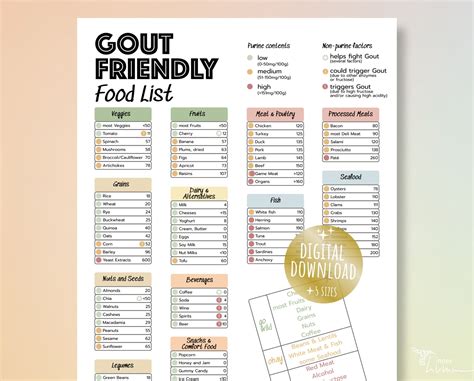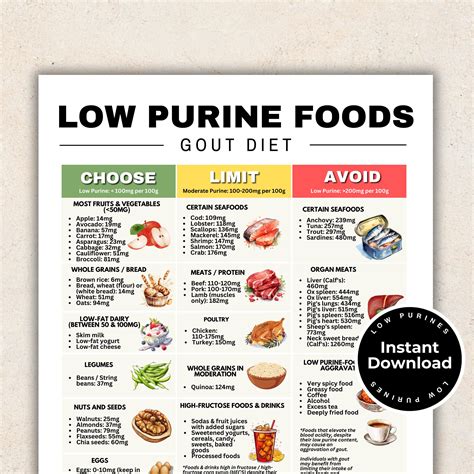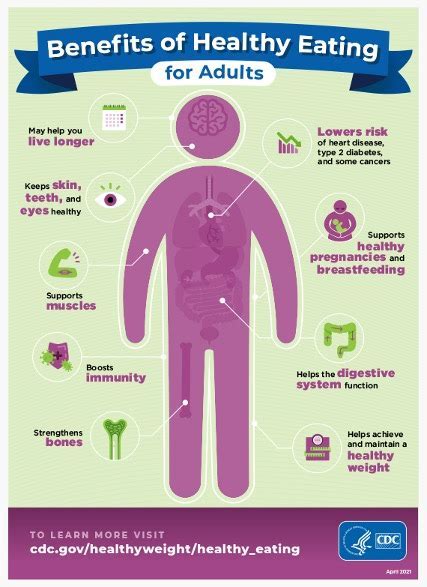Intro
Discover 5 foods for gout relief, including anti-inflammatory cherries and vitamin C-rich citrus, to help manage gout symptoms and prevent attacks with a balanced diet.
Gout is a type of arthritis that can cause sudden and severe joint pain, often in the big toe. It is caused by the buildup of uric acid in the blood, which can form sharp crystals in the joints. While there is no cure for gout, dietary changes can help manage the condition and reduce the risk of flare-ups. In this article, we will explore the importance of diet in managing gout and highlight five foods that can help alleviate symptoms.
Managing gout through diet is crucial, as certain foods can trigger or worsen symptoms. Foods that are high in purines, such as red meat and seafood, can increase uric acid levels in the blood, while foods that are high in sugar and saturated fat can exacerbate inflammation. On the other hand, foods that are rich in antioxidants, fiber, and omega-3 fatty acids can help reduce inflammation and promote overall health. By making informed dietary choices, individuals with gout can better manage their symptoms and improve their quality of life.
A well-balanced diet that includes a variety of whole, unprocessed foods can help alleviate gout symptoms. Fresh fruits, vegetables, whole grains, and lean proteins can provide essential nutrients and fiber, while reducing the risk of inflammation. Additionally, staying hydrated by drinking plenty of water can help flush out uric acid and reduce the risk of kidney stones. By combining a healthy diet with regular exercise and stress management, individuals with gout can reduce their risk of flare-ups and improve their overall health.
Introduction to Gout-Friendly Foods

Benefits of a Gout-Friendly Diet
A gout-friendly diet can provide numerous benefits, including reduced inflammation, improved joint health, and enhanced overall well-being. By avoiding trigger foods and incorporating nutrient-rich foods, individuals with gout can reduce their risk of flare-ups and improve their quality of life. Additionally, a gout-friendly diet can help promote weight loss, improve blood sugar control, and reduce the risk of heart disease.5 Foods for Gout Relief

How These Foods Can Help
These foods can help alleviate gout symptoms in several ways. Cherries and berries can help reduce inflammation and promote antioxidant activity, while fatty fish can help reduce inflammation and promote joint health. Leafy greens can help promote fiber intake and reduce the risk of inflammation, while olive oil can help reduce inflammation and promote overall health.Nutritional Benefits of Gout-Friendly Foods

Incorporating Gout-Friendly Foods into Your Diet
Incorporating gout-friendly foods into your diet can be easy and delicious. Try adding cherries and berries to your oatmeal or yogurt, or using olive oil as a dressing for your salads. You can also try grilling fatty fish such as salmon and serving it with a side of leafy greens.Managing Gout through Diet and Lifestyle

Benefits of a Comprehensive Approach
A comprehensive approach to managing gout can provide numerous benefits, including reduced inflammation, improved joint health, and enhanced overall well-being. By combining a healthy diet with regular exercise and stress management, individuals with gout can reduce their risk of flare-ups and improve their quality of life.Conclusion and Next Steps

We invite you to share your experiences with gout and how you've managed your symptoms through diet and lifestyle. Please comment below with any questions or tips you may have, and don't forget to share this article with anyone who may be struggling with gout.
What are the most common trigger foods for gout?
+Common trigger foods for gout include red meat, seafood, and foods high in sugar and saturated fat.
How can I incorporate more gout-friendly foods into my diet?
+Try adding cherries and berries to your oatmeal or yogurt, or using olive oil as a dressing for your salads. You can also try grilling fatty fish such as salmon and serving it with a side of leafy greens.
What are the benefits of a comprehensive approach to managing gout?
+A comprehensive approach to managing gout can provide numerous benefits, including reduced inflammation, improved joint health, and enhanced overall well-being.
